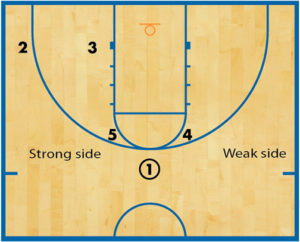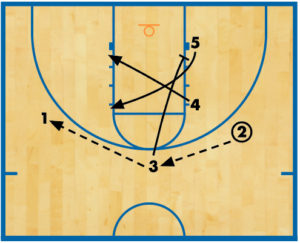Smothering 1-3-1 zone defense
The 1-3-1 defense has been very effective for our team for the following reasons:
- Normal zone offenses won’t work against a 1-3-1 defense, and it causes opponents to adjust from offensive comfort zones.
- Your team can utilize a 1-3-1 defense conservatively (by playing the passing lanes) or trap very aggressively.
- You can use slow players at certain defensive spots and not get hurt.
- It’s an up-tempo defense that mirrors the aggressiveness of a man-to-man defense.
- The players love this defense. If they anticipate well, they get a lot of tips and steals.
1-3-1 breakdown
The following shows rules and responsibilities for each position.
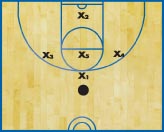
DIAGRAM 1 Shows the basic lineup of the 1-3-1.
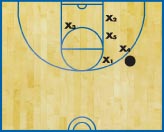
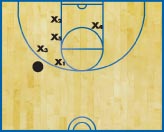
DIAGRAMS 2-3: Entry pass rotation. Once the entry pass is made to either wing, have your players rotate.
Rules/responsibilities
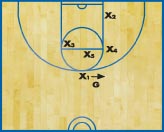
DIAGRAM 4 shows rotation vs. a 1-guard front.

DIAGRAM 5 shows rotation vs. a 2-guard front.
The top defender (X1) must:
- Keep the ball out of the middle.
- Against a 1-guard front, try to push the ball to the side.
If the ball is below X1, he or she plays between the ball and the middle of the free-throw line.
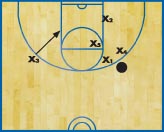
DIAGRAM 6 shows 4’s positioning.
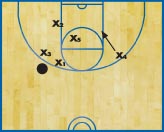
DIAGRAM 7 shows 3’s positioning.
The wing defenders (X3 and X4) should:
- Be fully responsible for the guards in front of them.
- Play between the ball and the baseline.
- Stop penetration at the top of the key extended.
- Not allow baseline drives.
- Trap in the corner with X2 at the baseline.
- Trap the best opposing guard at the top with X1.
When the ball is away from the wing defenders, they play between the ball and the opposite corner.
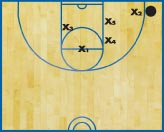
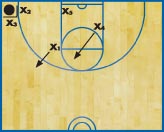
DIAGRAMS 8-9. The baseline defender (X2) must:
- Cover corner-to-corner.
- Trap with X3 and X4 in the corner.
- Stay in the lane until the ball is on its way to the player in the corner.
- Front the post.
When the ball is high, stay as high as possible to avoid the screen on the baseline.

DIAGRAM 10. The center (X5) should:
- Play between the ball and the basket.
- Defend the high post when the ball is on top.
- Front the post at all times when the ball is in the corner.

